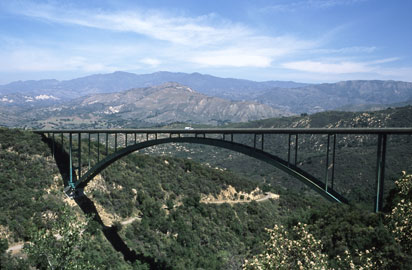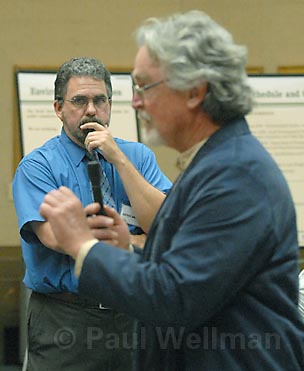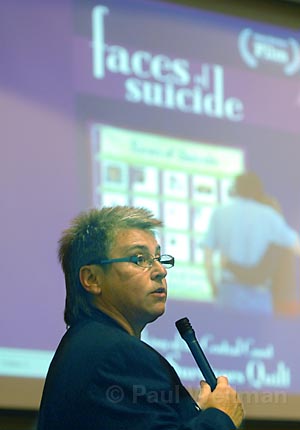Plans Move Ahead for Highway 154 Suicide Barrier
Meeting Discusses Alternate Preventative Measures

Caltrans, in an effort to prevent suicide jumps off the Cold Spring Canyon Bridge along Highway 154, is headed toward installing a safety barrier along the bridge. Since its construction in 1963, the bridge has been the site of 43 suicide jumps. A multi-agency task force was formed to discuss ideas for how to prevent further suicides at the bridge, which has the highest concentration of fatalities-suicides or otherwise-of any spot location in Caltrans District 5, which includes Monterey, Santa Cruz, San Benito, and San Luis Obispo counties in addition to Santa Barbara County.
In addition to the barrier, other options are being considered, some seeming more likely than others. Ideas include call boxes with a direct suicide hotline number (SBCAG is looking into the possibility), video cameras (they may have a negative effect, serving as an attraction to jumpers), restricting parking and pullout areas near the bridge (they’re needed for maintenance staff, lighting (research says it won’t help) and surveillance, the last of which might necessitate increased staffing and resources.

After two meetings in May 2006, retired Caltrans traffic safety engineer Nevin Sams said Caltrans saw an overwhelming response and favorable push to install the suicide barricade. “It’s not should we put it in, it’s how fast can we put it in,” said Sams, who is still volunteering his time on the project because he said he believes in it.
The project may not be completed as quickly as Nevin would like, however. By law, there are many hoops Caltrans has to jump through before construction can begin, including an environmental review design, which Caltrans is going through right now. If things go as planned, the $605,000 project-funded by the state and featuring six-foot-tall iron bars whose tops curl in towards the roadway-wouldn’t be completed until 2010. Even a temporary barrier for the meantime would be forced to undergo the same review. “We’re trying to expedite it as much as possible,” said project manager Sara von Schwind.
But Marc McGinnes, one of the few dissenters to the project-or at least the way Caltrans is going about the project-presented at an informational meeting said the process was moving too quickly. “It’s all about the decision-making,” he said. “You don’t jump to conclusions, you find facts.”

Not all of the options have been explored, he said. One main argument dissenters of the project have is that people who want to end their lives will find other ways to do it if the bridge had a barrier. Not true, said Dr. Jamie Rotnofsky, executive director of the Glendon Association. She cited Washington, D.C., where two bridges, the Ellington and Taft, run parallel to one another over the same river. One of the bridges had a barrier installed, and the number of annual suicide jumps dropped from four to zero. The other bridge’s suicide numbers stayed the same. She also cited a 1978 study which found that out of 515 people who were prevented from jumping from San Francisco’s Golden Gate Bridge, 94 percent were either still alive or had died of natural causes.
The other argument against the proposed bridge barrier contends that the aesthetics would deteriorate with the addition. Von Schwind said Caltrans is weighing the beauty side of things as much as it is weighing the engineering side of adding the barriers. The views from the bridge and of the bridge are both being taken into consideration.
Caltrans is accepting comments for this portion of the process through Aug. 8. The final environmental document won’t be released until next summer.



